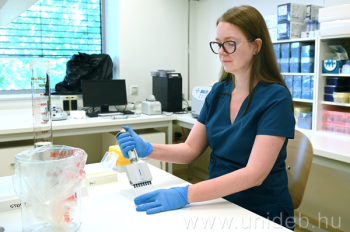
Why the Polyomavirus Award Matters
\n
The University of Debrecen’s recent recognition by the Count István Tisza Foundation signals a breakthrough in understanding the prevalence of polyomaviruses in Hungary. The award—received for a paper published in the Journal of Medical Virology—highlights not only the scientific rigor of the team but also the importance of monitoring viruses that are usually silent yet can reactivate in vulnerable patients.
\n
What Are Polyomaviruses and Why Do They Require Attention?
\n
Polyomaviruses were originally identified in the 1950s when they were linked to tumor formation in rodents. Subsequent work isolated two human pathogens, BK and JC, that infect most adults without causing symptoms but can lead to serious disease in immunosuppressed individuals. Recent sequencing advances have uncovered eleven additional human‑pathogenic polyomaviruses, yet only two are clearly linked to disease. The 2010s discoveries – MW and STL virus – remain enigmatic, prompting the Debrecen team’s focus.
\n
Connecting the Disease‑Free to the Disease‑Prone
\n
Despite being largely asymptomatic, polyomaviruses may replicate in the respiratory tract and other tissues. Understanding where and when they circulate helps clinicians anticipate potential complications, especially in transplant recipients and oncology patients.
\n
Designing a Large‑Scale Seroprevalence Study: A Practical Guide
\n
The Debrecen investigators set out to answer three key questions:
\n
- \n
- Are MW and STL polyomaviruses present in Hungary?
- What proportion of the population has been exposed, and at what age?
- Do respiratory secretions carry replicating virus capable of spreading to the middle ear?
\n
\n
\n
\n
Step 1 – Developing Specific Antigens
\n
Developing reliable serological assays requires producing viral antigens that trigger an antibody response. Researchers *designed* recombinant proteins for MW and STL, ensuring cross‑reactivity was minimized. This step is essential for accurate seroprevalence figures.
\n
Step 2 – Expanding Sample Size and Diversity
\n
The team measured several thousand blood samples across age groups, from infants to seniors. Such breadth reduces sampling bias and allows age‑specific prevalence modeling. For practitioners, partnering with local health departments can expedite access to diverse cohorts.
\n
Step 3 – Analyzing Respiratory Samples
\n
Beyond serum, the researchers examined tonsil tissue, throat swabs, and middle‑ear fluid from patients undergoing tonsil surgery during the SARS‑CoV‑2 pandemic. Viral PCR and sequencing confirmed active replication in these tissues, linking detection to potential clinical symptoms.
\n
Key Findings and Their Clinical Implications
\n
Three significant outcomes emerged:
\n
- \n
- MW polyomavirus is increasingly common with age, reaching a 50‑plus‑percent seropositive rate among adults. Clinicians should consider this in long‑term monitoring of immunocompromised patients.
- STL polyomavirus has an even higher reach – over 80 % of the population infected by early childhood. Early exposure may explain why many adults develop no symptoms.
- Both viruses can inhabit the respiratory tract, with detectable replication particularly in children. This raises questions about airborne transmission and the role of co‑infecting respiratory viruses.
\n
\n
\n
\n
Collaborative Opportunities for Medical Microbiology Professionals
\n
The University of Debrecen has made its protocols and data publicly available through research portals. Researchers interested in horizontal transmission, viral latency, or vaccine design can build on this foundation. Here are actionable steps:
\n
- \n
- Contact the Institute of Medical Microbiology to request access to assay kits or detailed methodology.
- Design comparative studies in other European countries to assess geographic variability.
- Integrate polyomavirus screening into routine virology panels for high‑risk populations.
- Explore the interaction of polyomaviruses with SARS‑CoV‑2 by analyzing overlapping patient samples.
\n
\n
\n
\n
\n
Future Directions: From Population Studies to In‑Vitro Pathogenesis
\n
The team plans to continue sampling, examining seasonality, co‑infecting pathogens, and identifying target cells using cell culture models. This in‑vitro approach will clarify how the viruses replicate within human tissues, a critical step toward understanding their pathogenic potential.
\n
Why In‑Vitro Work Matters
\n
Cell culture experiments provide mechanistic insight that epidemiological data cannot. By identifying which cells support viral replication, scientists can determine which organ systems might be at risk, informing both diagnostics and therapeutic strategies.
\n
Engage with the Debrecen Research Community
\n
Those interested in contributing or learning more can visit the University’s official research page at University of Debrecen News. The institution welcomes collaboration with international partners and offers graduate programs focusing on virology and immunology.
\n
Take Action Today
\n
1. Submit your application to our graduate programs to join cutting‑edge virology research.\n 2. Send us a message if you wish to co‑author a study on polyomavirus seroprevalence.\n 3. Explore our professional courses on medical microbiology for continuing education.\n 4. Share your own findings or questions in the comments below to foster discussion.\n 5. Read related articles on viral epidemiology through our research portal.
\n
This award is a testament to diligent, collaborative research. By applying similar methodologies, medical microbiology professionals worldwide can improve surveillance, diagnosis, and ultimately patient outcomes.
\n

